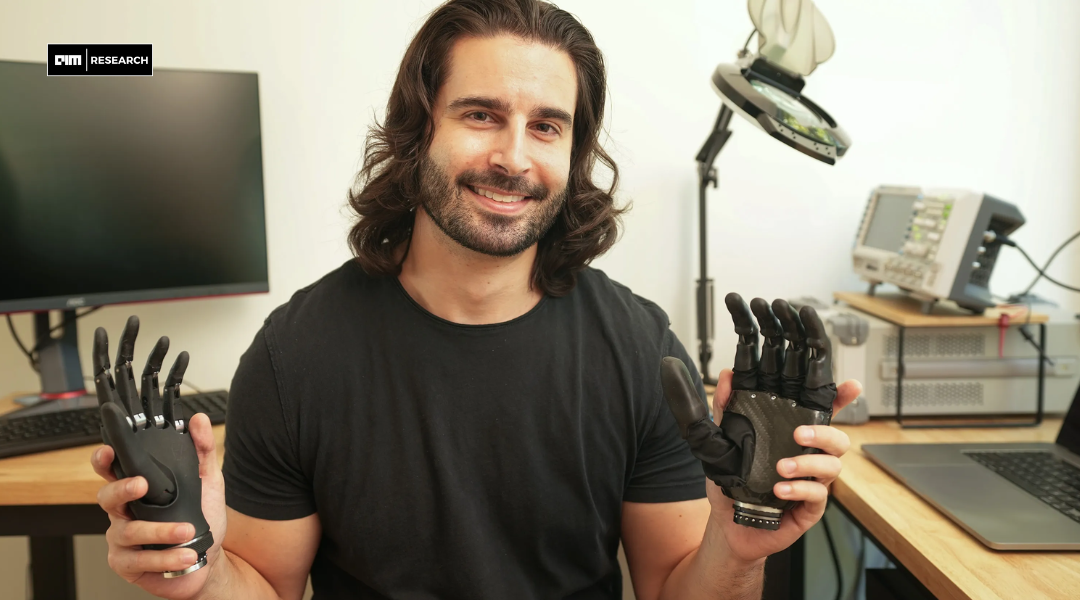
Phantom Neuro Raises $19 Million To Help People Feel Move And Live Again
- By Upasana Banerjee
- Published on
The founder emphasized that human-mimicking robots can’t just be smart and look cool, they need to have human touch.


Austin-based startup Phantom Neuro, born at the intersection of neuroscience and robotics, is redefining how experts interface with prosthetics and exoskeletons. The company’s breakthrough neural interface, Phantom X, is making intuitive, real-time control of bionic limbs a reality.
With its minimally invasive and remarkably accurate technology, the startup is restoring agency, independence, and a sense of wholeness by providing a seamless connection between mind, muscle, and machine with no brain implants or bulky hardware necessary.
The globally recognized advisory board of Phantom Neuro, which includes experts from CTRL-Labs, D.A.R.P.A., and Precision Neuro, was initially created at the Johns Hopkins University School of Medicine.
Phantom Neuro was founded by Dr. Connor Glass in 2020, during his research fellowship in plastic surgery and neuroengineering at Johns Hopkins University.
Initially aiming to assist patients with traumatic limb injuries, he recognized the limitations of existing prosthetic technologies and envisioned a solution that could offer more natural and intuitive control. Motivated by the desire to impact a broader patient population beyond individual surgical interventions, he established Phantom Neuro to develop a platform technology that bridges the gap between human neuromuscular signals and robotic systems.
The company’s mission is to create a world where physical limitations no longer define an individual’s potential, enabling seamless integration between humans and assistive devices.
In one of his blog posts founder and CEO of Phantom Neuro Dr. Connor Glass explained, self-driving cars exhibit human-like driving capabilities because they are trained on data generated by human drivers. Similarly, AI models like ChatGPT appear human because their training is based on language generated by humans.
Therefore Phantom is gathering full-spectrum movement data directly from the body to help the next generation of robots function more naturally, intuitively, and safely and this is where AI becomes the true game-changer.
Once Phantom X captures the raw biosignals, machine learning algorithms step in. These AI systems are trained to detect subtle patterns in the data and match them to specific movements. Whether it’s the intention to pinch, grip, or rotate the wrist, the AI can recognize what the user wants to do and translate it into action instantly. In early trials, Phantom Neuro’s system has demonstrated up to 94% accuracy in interpreting eleven different hand and wrist movements, all after just 10 minutes of calibration.
What makes this even more remarkable is that the AI adapts to each individual user. During setup, it quickly learns how a specific person’s muscle signals map to specific movements. As the user continues to wear and use the device, the AI continues to learn refining its accuracy even as conditions like muscle fatigue or minor electrode shifts occur.
This blend of AI and neuroengineering allows Phantom Neuro to deliver not just functionality, but a deeply personal and responsive experience. Users aren’t just operating a prosthetic they’re reclaiming control in a way that feels natural. And unlike invasive brain implants, Phantom’s system requires only a minor outpatient procedure, making this futuristic capability far more accessible. The founder emphasized that human-mimicking robots can’t just be smart and look cool, they need to have human touch.
Ottobock, a global leader in the fields of prosthetics, orthotics, and exoskeleton technology, recently led an oversubscribed $19 million Series A funding round for the company. The funding round also included participation from new investors Actual VC, METIS Innovative, e1 Ventures, Jumpspace, MainSheet Ventures, and Brown Advisory, as well as existing investors Breakout Ventures, Draper Associates, LionBird Ventures, Time BioVentures, and Risk and Return.
Phantom Neuro has secured an additional investment, raising its total funding to $28 million. This funding will be used to advance the development of the Phantom X robotic control platform, including preclinical and first-in-human trials, regulatory submissions, and research and development for expanded applications beyond prosthetic limbs.
“Ottobock’s backing underscores the growing convergence of neurotechnology, prosthetics, and robotics,” said Dr. Glass
Phantom Neuro is poised to transition from innovative lab technology to tangible clinical applications, capitalizing on the convergence of wearable robotics, AI, and healthcare, and bolstered by Ottobock’s expertise and FDA approval.
📣 Want to advertise in AIM Research? Book here >

Cypher 2024
21-22 Nov 2024, Santa Clara Convention Center, CA
A Vendor Briefing is a research tool for our industry analysts, and an opportunity for a vendor to present its products, services and business strategies to analysts who cover the vendor specifically or a related technology or market.
AIM Research encourages technology vendors and agencies to brief our team for PeMa Quadrants, when introducing a new product, changing a business model, or forming a partnership, merger, or acquisition.


